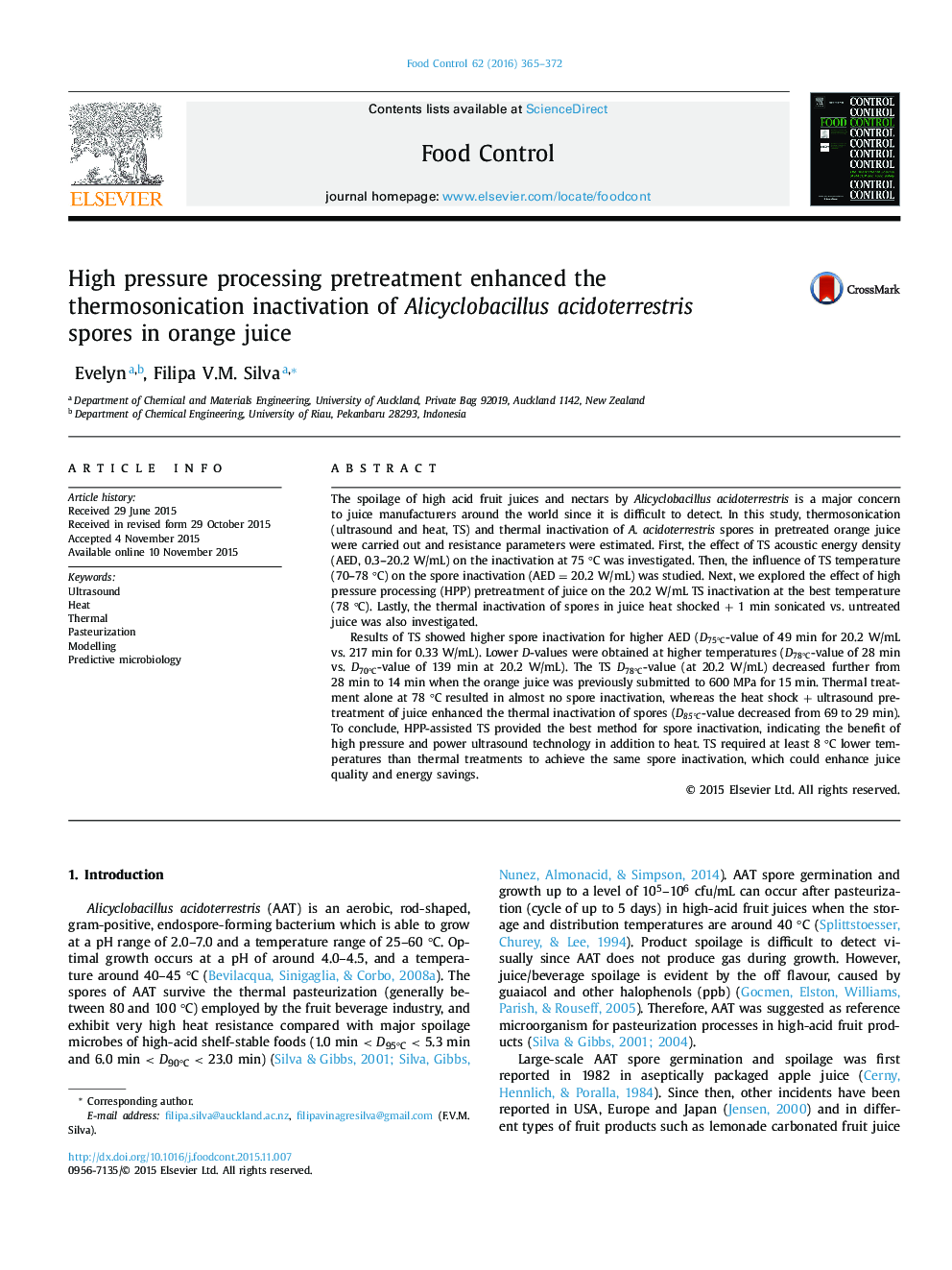| Article ID | Journal | Published Year | Pages | File Type |
|---|---|---|---|---|
| 6390481 | Food Control | 2016 | 8 Pages |
â¢The best inactivation method was HPP pretreatment with thermosonication.â¢Higher thermosonication acoustic energy density and temperature increased spore inactivation.â¢Thermosonication spore inactivation followed first order kinetics.â¢Heat shock then ultrasonication enhanced thermal spore inactivation.
The spoilage of high acid fruit juices and nectars by Alicyclobacillus acidoterrestris is a major concern to juice manufacturers around the world since it is difficult to detect. In this study, thermosonication (ultrasound and heat, TS) and thermal inactivation of A. acidoterrestris spores in pretreated orange juice were carried out and resistance parameters were estimated. First, the effect of TS acoustic energy density (AED, 0.3-20.2 W/mL) on the inactivation at 75 °C was investigated. Then, the influence of TS temperature (70-78 °C) on the spore inactivation (AED = 20.2 W/mL) was studied. Next, we explored the effect of high pressure processing (HPP) pretreatment of juice on the 20.2 W/mL TS inactivation at the best temperature (78 °C). Lastly, the thermal inactivation of spores in juice heat shocked + 1 min sonicated vs. untreated juice was also investigated.Results of TS showed higher spore inactivation for higher AED (D75°C-value of 49 min for 20.2 W/mL vs. 217 min for 0.33 W/mL). Lower D-values were obtained at higher temperatures (D78°C-value of 28 min vs. D70°C-value of 139 min at 20.2 W/mL). The TS D78°C-value (at 20.2 W/mL) decreased further from 28 min to 14 min when the orange juice was previously submitted to 600 MPa for 15 min. Thermal treatment alone at 78 °C resulted in almost no spore inactivation, whereas the heat shock + ultrasound pretreatment of juice enhanced the thermal inactivation of spores (D85°C-value decreased from 69 to 29 min). To conclude, HPP-assisted TS provided the best method for spore inactivation, indicating the benefit of high pressure and power ultrasound technology in addition to heat. TS required at least 8 °C lower temperatures than thermal treatments to achieve the same spore inactivation, which could enhance juice quality and energy savings.
